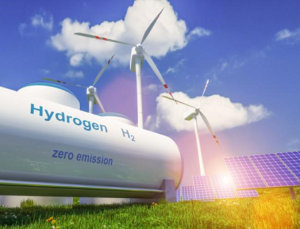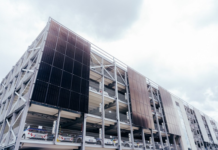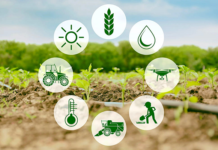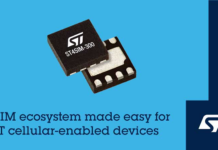
Thanks to cellular IoT-powered hydrogen smart meters a carbon-neutral future is closer
Limiting global warming to below 2°C requires that CO2 emissions are cut by around 25 percent by 2030, compared to 2010 levels, and continue to be cut to net zero by around 2070, according to the Intergovernmental Panel on Climate Change (IPCC). Today, the world has a pollution problem created by the emissions from billions of buildings. Energy-related CO2 emissions account for two-thirds of global greenhouse gas emissions, according to the International Renewable Energy Agency (IRENA).
Thankfully, creating positive change is on the global agenda. And one promising idea has started to gather momentum – aiming for a carbon-neutral future by transitioning gas network infrastructure to once again carry the ‘green gas’, hydrogen. The solution has potential, but to make it happen all stakeholders including policy makers, regulators, consumers and the energy industry itself must work together. At the same time, everyone will be relying on advanced, wireless tech-based smart metering solutions to keep the dream alive.
Hydrogen to the rescue?
Phased out by ‘natural gas’ as a source of power for cooking, heating and lighting in British homes around five decades ago, hydrogen has re-emerged as an unlikely hero. The gas burns when combined with atmospheric oxygen to release its energy with only water as a byproduct – no soot, no nitrous oxides, and perhaps best of all, no carbon dioxide with its high potential for environmental warming.
According to Northern Gas Networks, all major British cities could be using hydrogen again by 2052 at a cost of £50 billion ($66.8 billion). It is simple to obtain the gas by renewable-energy-powered electrolysis of water (the process of using electricity to split water (H2O) into oxygen and hydrogen) or by “reforming” methane, with the carbon dioxide byproducts captured, compressed and stored. The combination of zero-carbon production of hydrogen and its clean-burning nature would help to drastically cut carbon emissions and help protect the planet.
Hydrogen yields the most energy per unit volume of any fuel source, but there’s a caveat – it’s also highly flammable, which has tended to cause (largely unfounded) safety concerns among consumers. With this public scepticism in mind, several developed nations plan a stealthy introduction of hydrogen as part of a decarbonization strategy; initially blending up to 23 percent of the ultra-lightweight gas with natural gas. For the moment this is considered an acceptable and realistic target that avoids the need for major infrastructure investment.
In the U.K. as well as other countries, pilot schemes with hydrogen/natural gas blending are underway as a means to meet demanding carbon-emission targets, while feasibility projects are investigating the wider potential for the use of hydrogen as a major source of renewable energy in buildings. For example, the estimated $2.8 billion ‘H21’ programme, launched in 2016, is a suite of gas industry projects designed to support conversion of the U.K. gas networks to carry 100 percent hydrogen. The pioneering H21 Leeds City Gate Proof-of-Concept, led by Northern Gas Networks, confirmed that the existing grid has the capacity and could be gradually repurposed with minimal disruption to the public. And the U.K. government’s £25 million ‘Hydrogen for Heat’ (Hy4Heat) programme, a three-year feasibility study commissioned by the Department of Business, Energy and Industrial Strategy (BEIS), is exploring the potential use of hydrogen “downstream of the meter” in appliances, homes and businesses.
Cellular IoT hydrogen smart meters
Although hydrogen is a source of clean energy, complications do exist. No domestic hydrogen gas meters are currently available to measure and charge for gas usage. In conventional meters, gas flow is measured using a mechanical system based on a diaphragm but because of the small molecular size of hydrogen, hydrogen diaphragm meters would need to be about three times the size of a conventional meter – that makes them impractical.
One option is to replace mechanical diaphragm meters with ultrasonic devices. These rely on accurate ‘Time of Flight’ (ToF) measurement of the speed of sound to determine the speed of flow of the gas through a home’s pipes. But because the speed of sound in hydrogen is around three times faster than that in natural gas, significantly better timing precision is needed.
In response to this challenge, U.K.-based MeterTech has launched a smart meter that, unlike conventional gas meters with diaphragms, uses advanced ultrasonic functionality to make hydrogen metering practical. The new MeterTech smart meter not only uses a more advanced technique for the “recovery” of the ultrasonic signals in hydrogen it also has timing circuits capable of precise measurement of ToF in hydrogen. Furthermore, the meter has been designed to meet the highest safety requirements in Europe and elsewhere in the world.
Robust wireless connectivity is essential to transmit small amounts of IoT application data, such as that from a hydrogen smart meter, infrequently over long range. To enable utilities to remotely check what’s happening at the meter and gather accurate information over an extended period, MeterTech implemented cellular IoT – a Low Power Wide Area Network (LPWAN) technology supported by two versions, LTE-M and NB-IoT. The simple, secure, standardised and future-proofed connectivity solution provides reliable Cloud connectivity from the smart meter to the utility. And by eliminating manual meter reading, accurately billing customers, initiating dynamic pricing, monitoring grid losses and optimizing grid performance, utilities and governments can achieve optimal efficiency and maximize profit potential.
The MeterTech product integrates Nordic Semiconductor’s cellular-based nRF9160 System-in-Package (SiP) to take advantage of both LTE-M and NB-IoT cellular connectivity but low power consumption to extend battery life is also high on the agenda. While traditional ultrasonic-based meters consume on average around 30 to 40 microamps, MeterTech says the nRF9160 helps to reduce the average current of the meter to less than 15 microamps, despite the new ultrasonic gas measuring technique requiring a lot of computation.
Hope springs eternal, but there’s legitimate cause for optimism that advanced hydrogen smart metering, based on cellular IoT wireless connectivity, can be the answer to one of the world’s most pressing environmental questions. Indeed a zero-carbon future that once appeared a pipedream could already be in the pipeline.


















